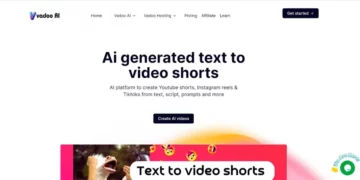A recent Harvard Business School study sheds light on the influence of GPT-4, the OpenAI language model, on professional performance. Is it really a catalyst for productivity or are there nuances to consider?
The research involved BCG consultants and was conducted by experts from Harvard, MIT, Wharton, BCG and Warwick Business School. It compared the performance of consultants who used GPT-4 with those who did not.
Consultants who implemented GPT-4 in their work experienced a 40% increase in the quality of their output. They also saw a 25% increase in work speed and a 12% increase in task completion.
The study introduces the term “Irregular Technology Frontier” to describe the inconsistent performance of AI on different tasks. It also categorizes AI users into Centaurs, who divide tasks between humans and machines, and Cyborgs, who integrate human and AI efforts.
Practical Implications
The results of the Harvard study not only demonstrate that implementing GPT-4 can significantly improve work efficiency and quality, but also suggest that how AI is adopted can vary considerably depending on the specific needs and conditions of each company. Some of the most relevant practical implications are explored here:
Adaptability According to Performance
The study showed that lower-performing consultants experienced a more significant improvement in their work when using GPT-4. This suggests that AI could be especially useful in elevating the performance of employees who might be struggling, which in turn could lead to greater cohesion and efficiency across the team.
Task Personalization
Categorizing AI users into Centaurs and Cyborgs provides a structure for thinking about how tasks can be divided between humans and machines. Centaurs could use AI for more routine tasks, freeing up human time for activities that require more critical thinking. Cyborgs, on the other hand, could find ways to integrate AI into their workflows in more intricate ways, improving both efficiency and the quality of the end result.
Let’s look at some examples:
Tasks for Centaurs
- Content Generation: use GPT-4 to write drafts of articles, reports or emails, which will then be reviewed and personalized by the human.
- Data Analysis: Delegate preliminary data collection and analysis to AI, while the human is responsible for interpreting the results and making strategic decisions.
- Customer Service: Use chatbots to handle frequently asked questions and common problems, freeing up human staff to deal with more complex cases that require empathy and judgment.
- Social Media Management: Allow AI to schedule and post ChatGPT content on social networks based on optimization algorithms, while the human handles strategy and engagement.
- Document Review: Use AI to perform grammar and style review on long documents, leaving the human to review the content in terms of consistency, logic and accuracy.
Tasks for Cyborgs
- Software Development: Integrate AI into the coding process to suggest optimizations in real time, while the human handles the architecture and logic of the program.
- Graphic Design: Use AI tools that suggest designs based on certain parameters, while the human designer adjusts and customizes the final result.
- Medical Research: Employ AI algorithms to quickly analyze large medical datasets, with the healthcare professional interpreting the results and applying their clinical knowledge.
- Strategic Planning: Use predictive AI models to anticipate market trends or consumer behavior, while the human team adjusts strategy based on these insights.
- Video Editing: Implement AI tools for basic cutting and editing of video footage, allowing the human editor to focus on creative aspects such as narrative and pacing.
These tasks illustrate how Centaurs and Cyborgs can collaborate with AI in different but complementary ways, optimizing both efficiency and quality of work.
Managing Workplace Diversity
One of the concerns raised by the study is the possible over-standardization of outcomes. Companies should be aware of this risk and may need to implement strategies to maintain diversity in job types and creative approaches.
Finally, implementing AI in any work environment should be an iterative process. Companies will need to establish clear metrics to assess the impact of AI on job performance and be willing to make adjustments as needed.
Since AI is constantly evolving, ongoing training will be essential for employees to keep up with the latest updates and best practices. This is especially relevant in industries that are experiencing rapid technological change.
While AI shows potential in improving efficiency, it also presents challenges. One of these is the over-standardization of results, which could lead to a decrease in labor diversity. AI could have long-term implications for training and job roles, especially for junior staff. It is crucial to foster a culture of continuous learning to adapt to this evolving technological landscape.
Conclusion
The Harvard Business School study on the impact of GPT-4, the OpenAI language model, on professional performance highlights the significant potential of AI to enhance work efficiency and quality. Consultants who integrated GPT-4 into their workflows experienced substantial improvements, including a 40% increase in output quality, a 25% boost in work speed, and a 12% rise in task completion. This research introduces the concept of an “Irregular Technology Frontier” to explain the varying performance of AI across different tasks and categorizes AI users into “Centaurs” and “Cyborgs,” reflecting different approaches to human-machine collaboration.
The practical implications drawn from the study underscore that AI adoption must align with an organization’s specific needs and conditions. It becomes evident that adaptability and task personalization are essential considerations:
- Adaptability According to Performance: AI, like GPT-4, can particularly benefit employees who may be struggling, leading to improved team cohesion and overall efficiency. It demonstrates that AI can act as a performance enhancer, especially for those in need of support.
- Task Personalization: The distinction between Centaurs and Cyborgs offers a framework for strategically dividing tasks between humans and machines. This approach optimizes efficiency while maintaining a high quality of work.
FAQs
1. What is GPT-4, and how does it improve work efficiency?
GPT-4 is an AI language model developed by OpenAI. According to the Harvard study, GPT-4 significantly improves work efficiency by enhancing the quality of output, increasing work speed, and boosting task completion. It can handle a range of tasks, from content generation to data analysis, depending on how it’s integrated into workflows.
2. What is the “Irregular Technology Frontier” mentioned in the study?
The “Irregular Technology Frontier” refers to the varying performance of AI across different tasks. It highlights that AI’s effectiveness is not consistent and depends on the specific nature of the task.
3. What are Centaurs and Cyborgs in the context of AI adoption?
Centaurs are AI users who divide tasks between humans and machines, using AI for more routine or repetitive tasks, while Cyborgs integrate AI into their workflows in more intricate ways, optimizing both efficiency and the quality of work.
4. How can companies personalize tasks using AI?
Companies can personalize tasks by categorizing them as suitable for Centaurs or Cyborgs. For example, routine tasks like content generation, data analysis, and customer service can be automated with AI for Centaurs, freeing up human time for more complex and creative tasks. Cyborgs, on the other hand, can integrate AI into tasks like software development, graphic design, medical research, strategic planning, and video editing to enhance efficiency and quality.
5. What challenges does AI adoption pose for companies?
AI adoption may lead to over-standardization of results, potentially reducing labor diversity. It can also impact training and job roles, especially for junior staff. Therefore, fostering a culture of continuous learning is crucial to adapt to the evolving technological landscape.
6. How should companies approach the implementation of AI in the workplace?
Companies should approach AI implementation as an iterative process, setting clear metrics to assess its impact on job performance and being willing to make adjustments as needed. Ongoing training for employees is essential to keep up with the latest updates and best practices, especially in rapidly changing industries.
For more details on the Harvard study and a deeper understanding of the implications of GPT-4 on work efficiency, you can refer to the full study.
Follow us on our social networks and keep up to date with everything that happens in the Metaverse!
Twitter Linkedin Facebook Telegram Instagram Google News Amazon Store












































